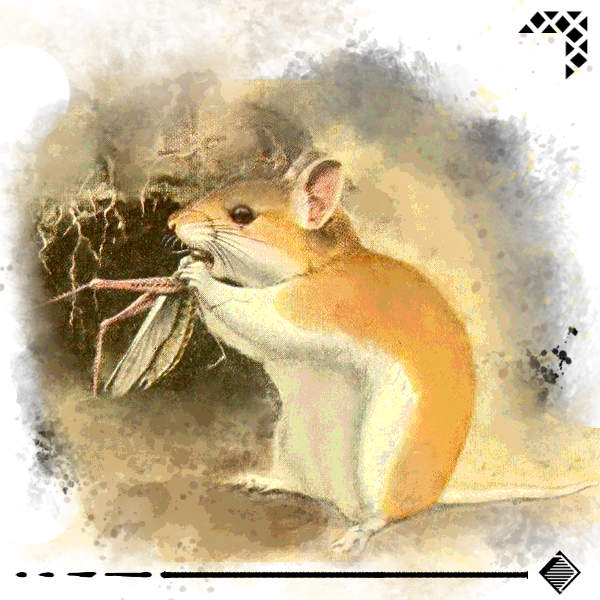Greater Grasshopper Mouse
The Greater Grasshopper Mouse is a monstrous version of the ordinary grasshopper mouse. Also known as the werewolf mouse, its is a highly agile rodent, carnivorous and immune to toxins. It gets its name from its tendency to howl at the moon as well as its aggressive nature. It behaves like an predatory great cat with sound-based attacks rather than the skittish behavior more typical of rodents. It's purely nocturnal and is hampered by strong light.
Traits & Abilities
- Tags: Sentient,Terrestrial, Aberration, Twister
- Conditions: Resistent to Life, +2 Dexterity, Vulnerable to Energy
- Whistling Aura: Marks its territory with an eerie whistle
- Howl: Scare enemies with an earie howl
- Stalk: Mark its prey and stalk them through the battlefield
- Pounce: Jump a long distance and land with a claw Attack
- Claw:
Basic Information
Dietary Needs and Habits
Greater grasshopper mice are ruthless desert hunters, feeding on all kinds of creatures, but specializing in venomous insects and reptiles, such as gila monsters, giant scorpions, and large snakes.
Biological Cycle
Although technically an aberration, the species has stabilized to almost being a natural animal. Greater Grasshopper Mice have litters of 3-4 pups, each born helpless. They are ambulatory within a couple hours, and develop teeth and claws over the course of about a week. They take several years to grow into their adult size, and juveniles are often mistaken for adult grasshopper mice of the ordinary kind.




Comments